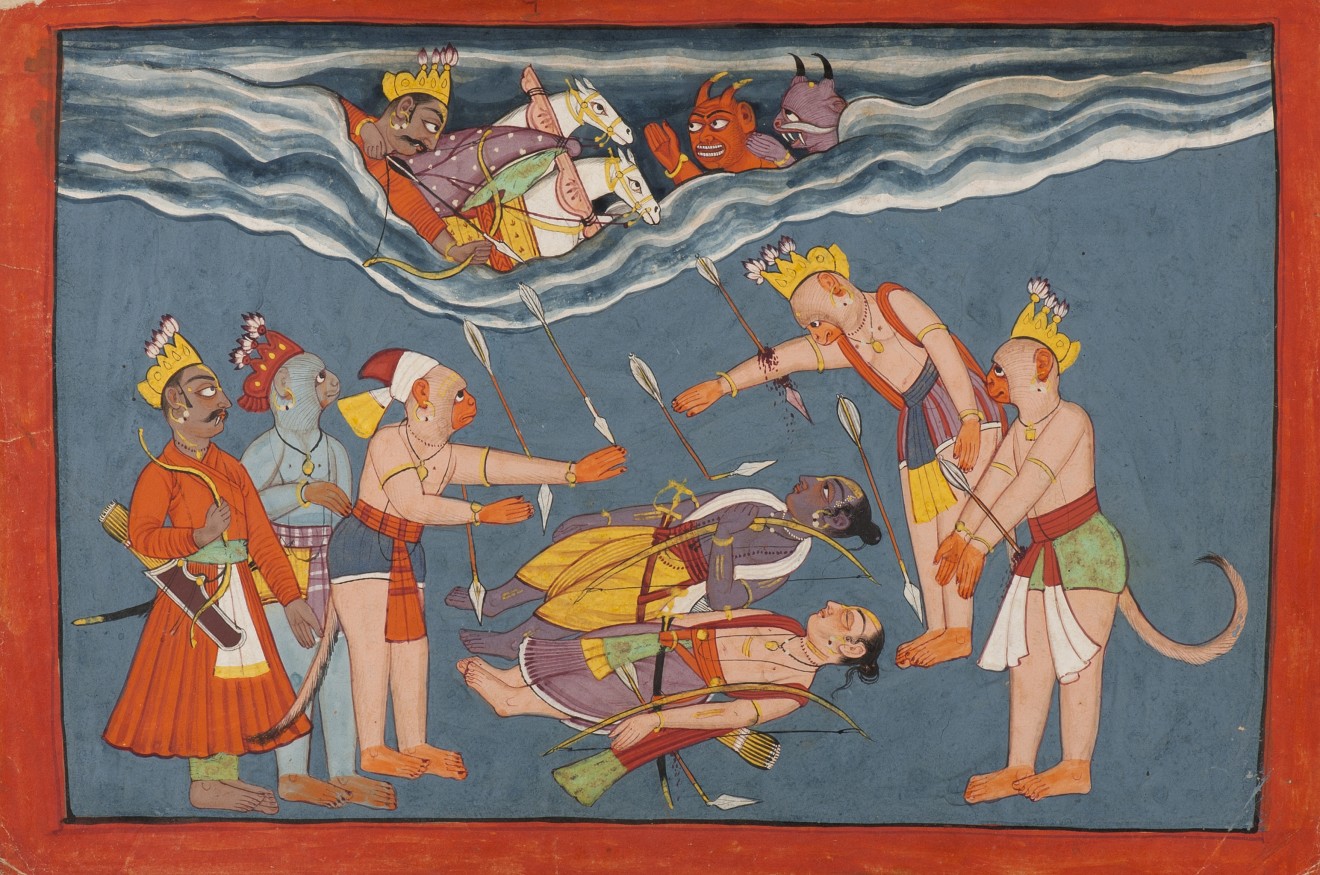Kulu or Mandi, India
Tempera on paper
Circa 1700 – 1710
The current painting is from an album of illustrations known as the 'Shangri' Ramayana after Shangri, the place of residence of a branch of the royal family of Kulu who were formerly in possession of the largest portion of these paintings. The Shangri Ramayana is widely considered to be one of the most important series of paintings from the Punjab Hills. The present illustration is from a section of the epic, which relates to the events leading up to the assault on Ravana's stronghold. The scene illustrates Rama and Lakshmana lying immobilized on the ground whilst the demon Indrajit appears from the clouds in a celestial chariot, and fires arrows down upon the heroes. This climactic scene is rendered against a deep blue background with a striking cloud line running along the top margin.
Indrajit was the eldest son of Ravana and according to the text of the Ramayana he played a central role in the war between Rama and Ravana. At a young age, Indrajit had trained under the guidance of Shukra and had obtained numerous magical weapons, he had also won a boon from Brahma of a celestial chariot that would make him invulnerable in war. Here we see Indrajit using his magical powers to attack Rama and Lakshamana, the monkey army look on in dismay as they attempt in vain to protect the heroes. An interesting artistic feature of the painting is that the artist has chosen to depict Indrajit and his uncle, Vibhishana in an almost identical manner. Indrajit appears in the sky whilst his uncle stands behind the gathered monkeys looking on in dismay. Both figures are dressed in red robes and both bear fangs, perhaps an artistic element intended to highlight their familial links.
W. G. Archer, who was one of the first scholars to examine the Shangri Ramayana, divided the paintings into different stylistic groups. For further discussion concerning the stylistic types see W. G. Archer, Indian Paintings from the Punjab Hills, London, 1973, vol. 1, p. 328. Style III of this dispersed series includes these wonderfully humanized portraits of the monkeys and are found mostly in the in the Book of Kishkindha, or as here the Book of Lanka, sometimes termed the Book of War. Pages in Style III are characterized by Archer as notable for ‘the impish treatment of the monkeys, the rioting exuberance with which trees are depicted and the bold gusto which is everywhere apparent.’ (Archer, 1973, p. 328). For further discussion as to the disputed origin of the series see amongst others Goswamy and Fischer, pp. 76-91 (who place styles I and II in Bahu); and Britschgi and Fischer 2008, pp. 12-14 (who attribute the entire series to Bahu).
Paintings from the Shangri Ramayana series are in the collections of the National Museum, New Delhi; Bharat Kala Bhavan, Benaras; British Museum and Victoria and Albert Museum amongst others. For other illustrations from the same series, see Sotheby's New York, April 1, 2005, lots 108 & 109; September 20, 2005, lots 125 & 126; March 29, 2006, lots 157 & 158 and September 19, 2006, lots 9 & 10.
